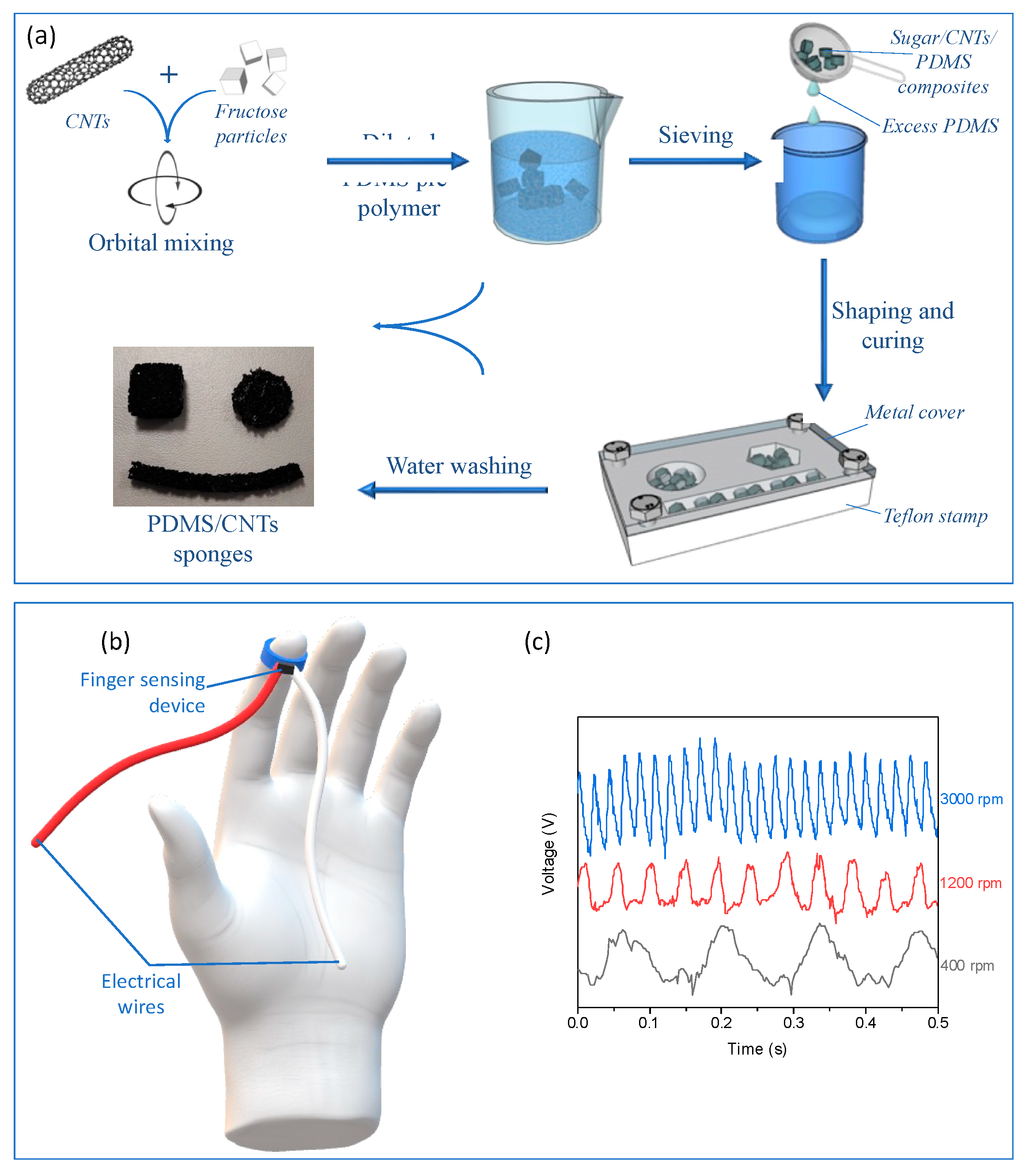Mechanochemical Approach to Carbon Nanotubes-Based Piezoresistive Sensors’ Fabrication †
Abstract
:1. Introduction
2. Materials and Methods
Characterization
3. Discussion
Author Contributions
Funding
Institutional Review Board Statement
Informed Consent Statement
Data Availability Statement
Conflicts of Interest
References
- Turco, A.; Monteduro, A.G.; Montagna, F.; Primiceri, E.; Frigione, M.; Maruccio, G. Nanoarchitectonics of highly sensitive and with large working range 3D piezoresistive microporous foam based on carbon nanotubes and elastomer. J. Colloid Interface Sci. 2022, 607, 1436–1445. [Google Scholar] [CrossRef] [PubMed]
- Turco, A.; Monteduro, A.G.; Montagna, F.; Primiceri, E.; Frigione, M.; Maruccio, G. Does Size Matter? The Case of Piezoresistive Properties of Carbon Nanotubes/Elastomer Nanocomposite Synthesized through Mechanochemistry. Nanomaterials 2022, 12, 3741. [Google Scholar] [CrossRef] [PubMed]
- Turco, A.; Monteduro, A.G.; Montagna, F.; Primiceri, E.; Frigione, M.; Maruccio, G. The effect of synthetic conditions on piezoresistive properties of ultrasensitive carbon nanotube/PDMS 3D composites. Polymer 2023, 264, 125534. [Google Scholar] [CrossRef]

Disclaimer/Publisher’s Note: The statements, opinions and data contained in all publications are solely those of the individual author(s) and contributor(s) and not of MDPI and/or the editor(s). MDPI and/or the editor(s) disclaim responsibility for any injury to people or property resulting from any ideas, methods, instructions or products referred to in the content. |
© 2024 by the authors. Licensee MDPI, Basel, Switzerland. This article is an open access article distributed under the terms and conditions of the Creative Commons Attribution (CC BY) license (https://creativecommons.org/licenses/by/4.0/).
Share and Cite
Primiceri, E.; Monteduro, A.G.; Montagna, F.; Chiriacò, M.S.; Ferrara, F.; Frigione, M.; Maruccio, G.; Turco, A. Mechanochemical Approach to Carbon Nanotubes-Based Piezoresistive Sensors’ Fabrication. Proceedings 2024, 97, 218. https://doi.org/10.3390/proceedings2024097218
Primiceri E, Monteduro AG, Montagna F, Chiriacò MS, Ferrara F, Frigione M, Maruccio G, Turco A. Mechanochemical Approach to Carbon Nanotubes-Based Piezoresistive Sensors’ Fabrication. Proceedings. 2024; 97(1):218. https://doi.org/10.3390/proceedings2024097218
Chicago/Turabian StylePrimiceri, Elisabetta, Anna Grazia Monteduro, Francesco Montagna, Maria Serena Chiriacò, Francesco Ferrara, Mariaenrica Frigione, Giuseppe Maruccio, and Antonio Turco. 2024. "Mechanochemical Approach to Carbon Nanotubes-Based Piezoresistive Sensors’ Fabrication" Proceedings 97, no. 1: 218. https://doi.org/10.3390/proceedings2024097218









